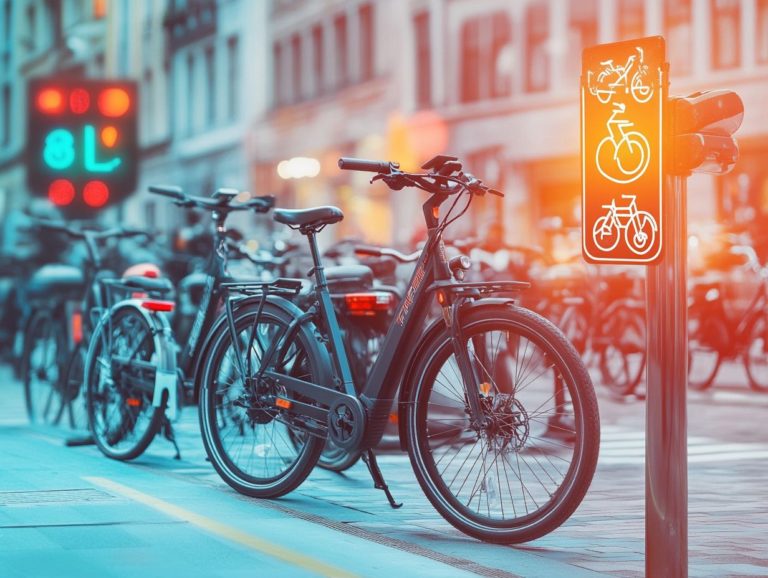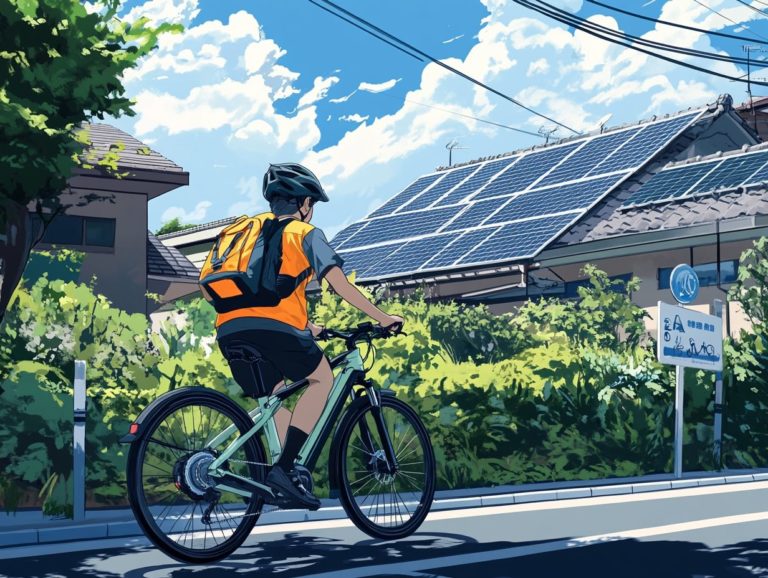The Essential Guide to Electric Bicycle Laws for Parents
Navigating the world of electric bicycles can feel overwhelming, especially for parents grappling with the myriad of laws and regulations.
This guide simplifies everything you need to know about electric bikes, covering their definition, benefits, safety considerations, and legal requirements. Whether you aim to provide your child with a convenient mode of transportation or seek clarity on the rules, this article arms you with essential information to make well-informed decisions.
Dive in to uncover how electric bicycles can elevate your family’s travel experience while prioritizing safety and adherence to regulations.
Contents
- Key Takeaways:
- Understanding Electric Bicycle Laws
- Benefits of Electric Bicycles for Parents
- Safety Considerations for Parents
- Legal Requirements for Electric Bicycles
- Tips for Choosing the Right Electric Bicycle for Your Child
- Frequently Asked Questions
- What is an electric bicycle and how is it different from a regular bicycle?
- Are there any age restrictions for riding an electric bicycle?
- Do electric bicycles require a license or registration?
- What safety equipment is required when riding an electric bicycle?
- Are there any speed limits for electric bicycles?
- Can I ride my electric bicycle on bike paths or trails?
Key Takeaways:
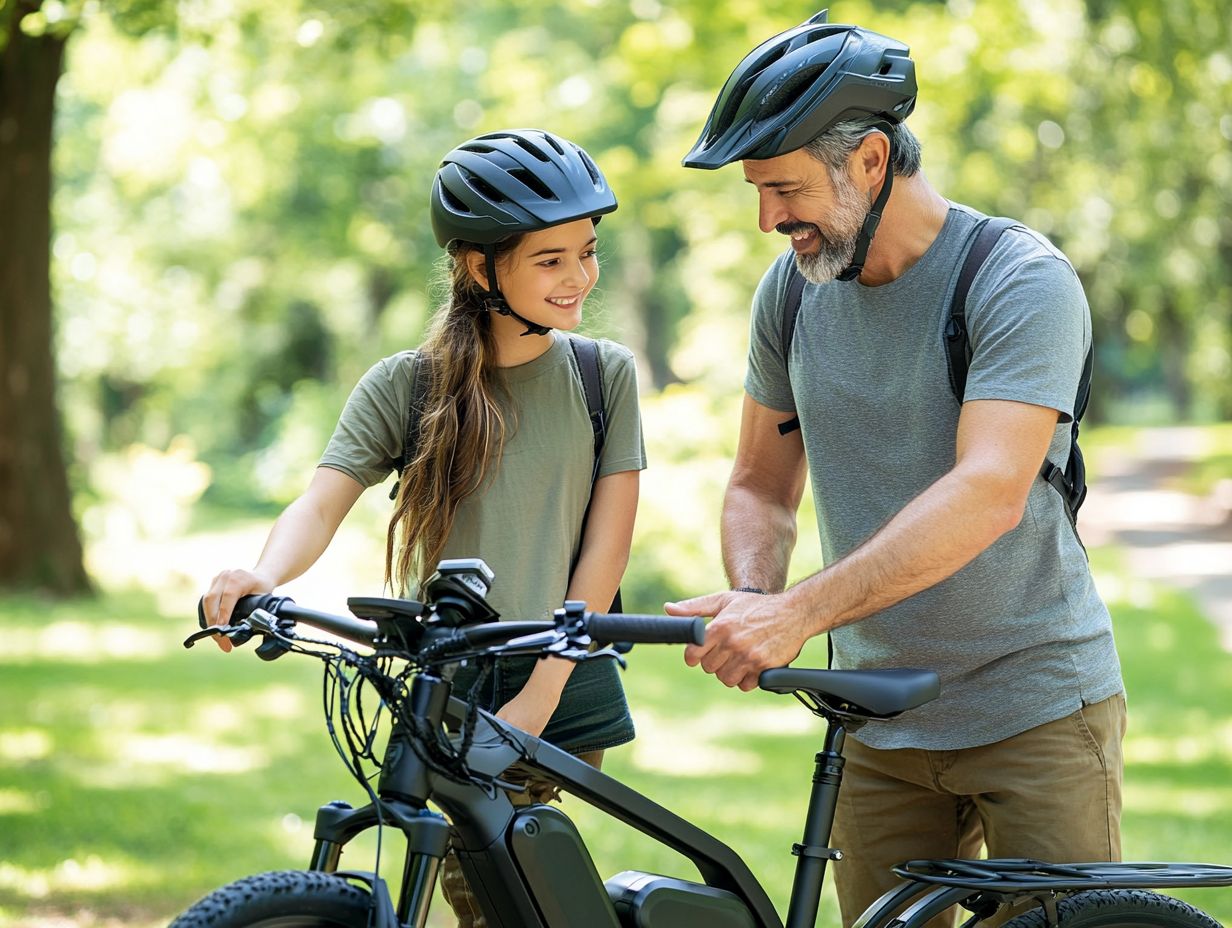
- More parents are discovering the joy of electric bicycles due to their convenience and cost savings.
- Familiarize yourself with safety regulations, including protective gear and regular bike checks, to ensure your child’s safety while riding.
- When choosing an electric bicycle for your child, consider age restrictions, licensing requirements, and speed limits for legal compliance.
Understanding Electric Bicycle Laws
Understanding electric bicycle laws is crucial as you navigate the ever-evolving landscape of electric mobility. These laws cover various aspects, including e-bike classifications, safety requirements, and state-specific regulations that dictate how and where you can operate your electric bike.
Recently, lawmakers have acknowledged the unique nature of e-bikes and their contribution to enhancing transportation freedom. This recognition has resulted in a patchwork of local ordinances and federal statutes addressing everything from helmet laws to regular bike checks. Staying informed about understanding electric bicycle laws in California ensures you remain compliant while enjoying your ride.
What are Electric Bicycles?
Electric bicycles, or e-bikes as they re commonly known, are bicycles equipped with an electric motor that assists you while pedaling. This feature makes them an attractive option for both commuters and recreational riders.
You can generally categorize these innovative machines into two primary types: pedal assist and motorized bicycles. Pedal assist models amplify your pedaling efforts, offering various levels of support based on how much you engage. This means you can conquer hilly terrains effortlessly while still enjoying a rewarding workout. On the other hand, motorized bicycles rely on throttle control, which gives you a boost without the need to pedal at all. It’s also important to be aware of electric bicycle regulations to ensure you’re following the rules while enjoying these rides.
As the world leans more towards electric mobility, e-bikes present an eco-friendly alternative to traditional vehicles, seamlessly blending convenience with sustainability.
Benefits of Electric Bicycles for Parents
As a parent, you ll discover that electric bicycles present a wealth of advantages that go well beyond simple convenience and cost savings. They serve as an eco-friendly mode of transportation that not only encourages family bonding activities but also contributes to your overall health.
By opting for electric bikes, you re making a conscious choice to reduce the carbon footprint typically associated with traditional vehicles, all while enjoying the journey together with your loved ones.
Convenience and Cost Savings
Electric bikes offer you unparalleled convenience as a parent, allowing for easy commutes, quick trips to the store, and enjoyable family outings all without the stress of traffic or parking.
By choosing e-bikes, you can effortlessly navigate congested city streets while saving a significant amount of time. Studies indicate that e-bike commuters can slash their travel time by up to 40% compared to traditional vehicles, making them perfect for those hectic mornings. However, it’s important to be aware of local regulations; for instance, check out this guide for tourists in Paris on electric bicycle laws.
The financial advantages are compelling; recent reports suggest that families can save over $5,000 annually on fuel and maintenance costs by opting for e-bikes instead of cars. This choice not only alleviates logistical hurdles such as hunting for parking or battling crowded public transport but also enables you to instill eco-friendly habits in your children. To ensure you navigate the rules correctly, check out electric bicycle laws: a guide for beginners, nurturing a healthier and more active lifestyle for the entire family.
Safety Considerations for Parents
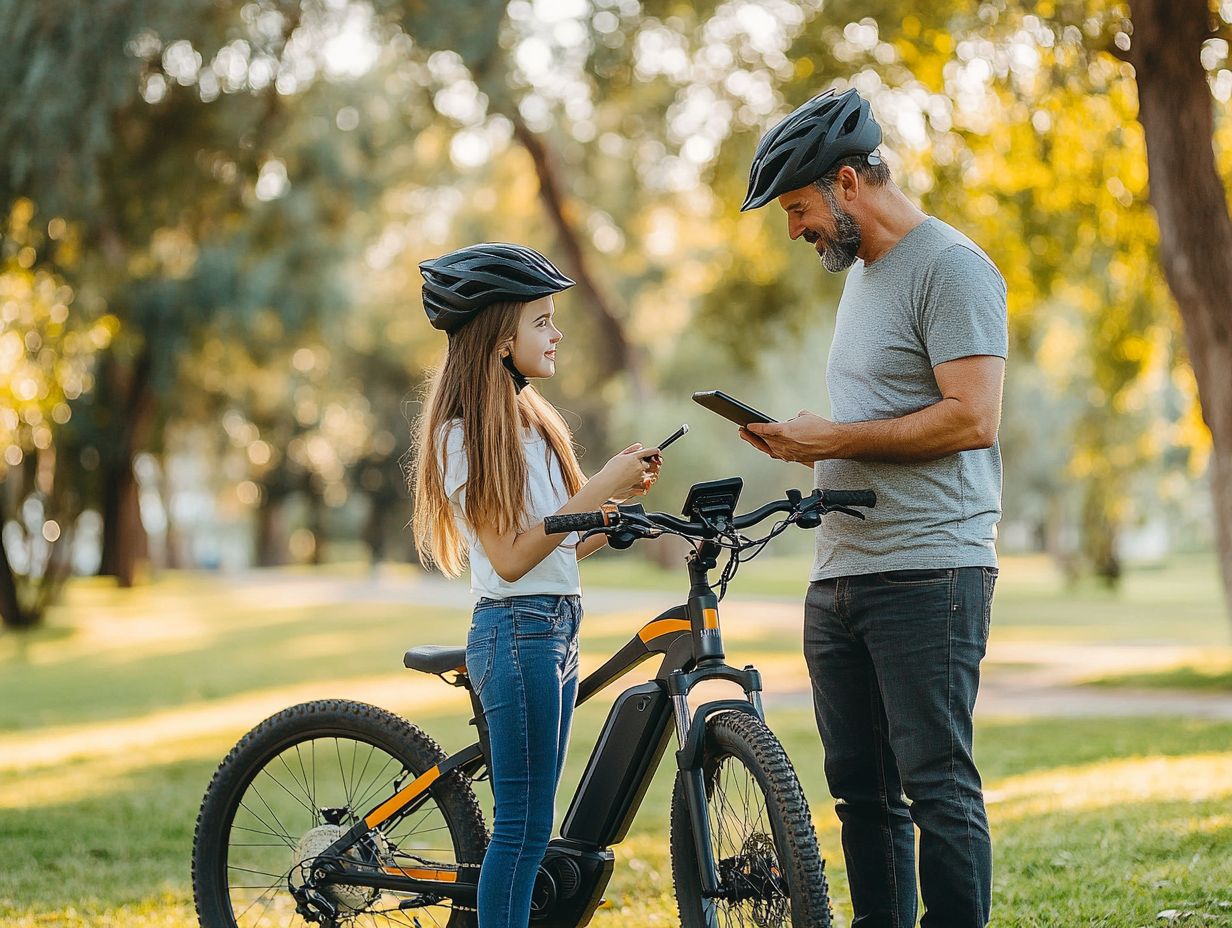
Safety is a paramount concern for you, especially when considering electric bicycles for your children.
Understanding important safety rules and e-bike laws is essential for ensuring a secure riding experience while following traffic regulations.
Rules and Regulations for Riding
Knowing the rules and regulations surrounding electric bicycles is crucial for parents, ensuring that children can ride safely and legally.
Local ordinances affect where e-bikes can be used. It’s vital for you to learn about the rules in your community. Some areas confine e-bike use to bike lanes or specific routes. Others might impose age-related restrictions or require helmets for young riders. If you’re considering an e-bike for your child, be sure to check out this guide on how to buy an electric bicycle for kids.
By following these traffic laws, your children will learn to navigate responsibly and contribute to a safer environment for everyone. This approach fosters a culture of safety and respect among young riders, helping them understand the importance of understanding electric bicycle safety regulations to protect themselves and others.
Protective Gear and Maintenance
Investing in protective gear and conducting regular maintenance checks for your electric bikes are essential for safety and longevity.
Consider necessities like helmets, knee pads, and reflective clothing to improve visibility. Regularly checking tire pressure, brakes, and battery levels helps prevent accidents and extends the bike’s life.
Show your kids how to ride safely. This builds responsible habits and keeps them safe on the road! Involve them in routine bike checks or explain the purpose of each piece of protective gear; this instills a sense of ownership and respect for their equipment.
By emphasizing the excitement of safe riding, you’re not just enhancing their skills you’re ensuring they understand the serious implications of overlooking safety measures.
Legal Requirements for Electric Bicycles
Navigating the legal landscape for electric bicycles can be intricate. These laws cover various factors, including classifications of e-bikes, age restrictions, licensing requirements, and both federal and state regulations.
It’s essential to familiarize yourself with these nuances to ensure compliance and enjoy your rides without any legal hitches.
Age Restrictions and Licensing
Age restrictions for riding electric bicycles can vary significantly. It s crucial for you to understand e-bike laws to ensure both compliance and safety, especially for younger riders.
Take California, for example. You must be at least 16 years old to operate a Class 3 e-bike, which can reach speeds up to 28 mph. In contrast, Texas allows riders as young as 15 to ride any type of e-bike if they have a valid driver’s license. It’s important to be aware of the understanding electric bicycle safety regulations in your area.
These regulations serve an important purpose. By restricting high-speed bicycles for younger riders, they promote responsible riding practices. In some areas, age-appropriate licensing, similar to what’s required for mopeds, fosters a culture of safety. To stay informed, it’s crucial to understand the top 5 electric bicycle laws every rider should know. This ultimately helps reduce accidents and encourages better riding behaviors.
Speed and Power Limitations
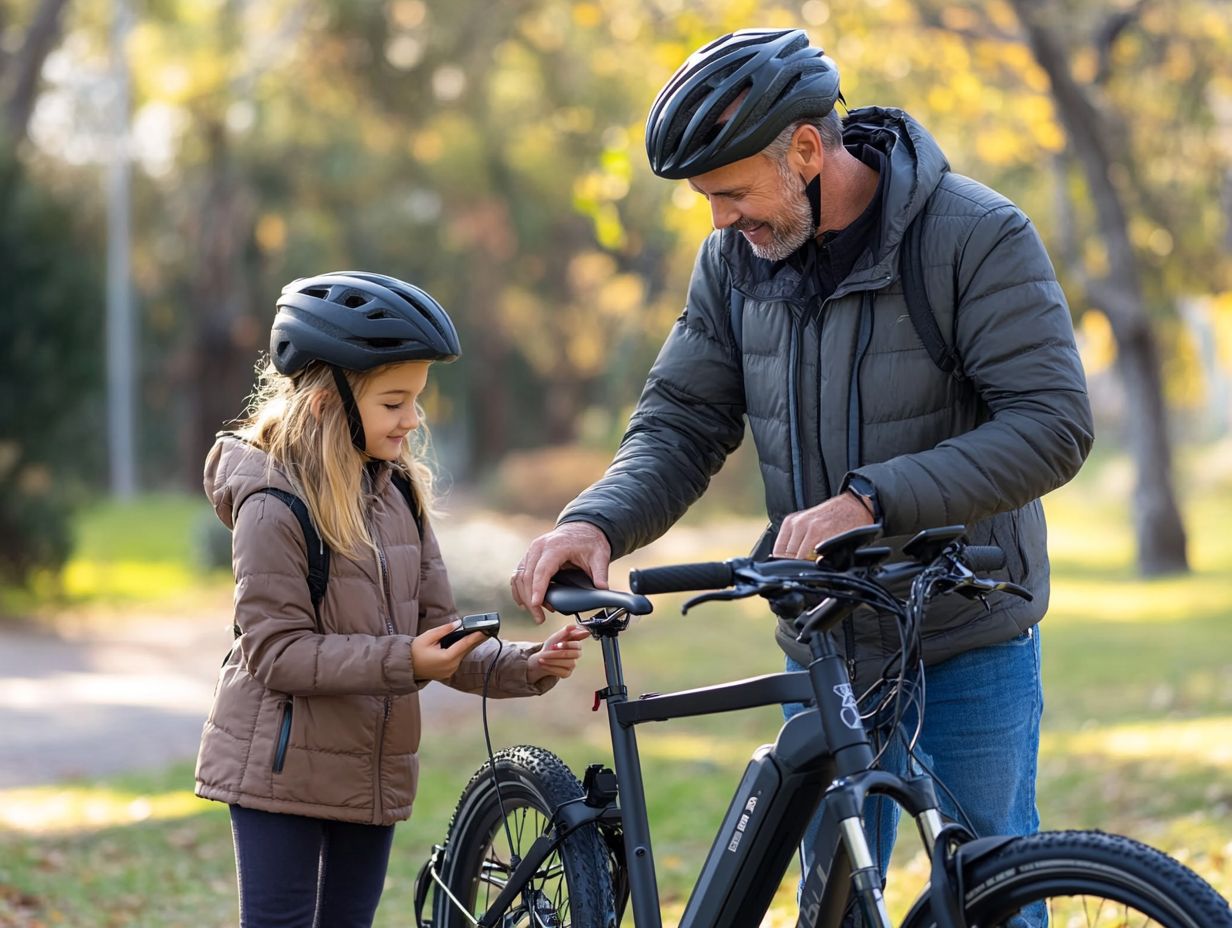
Electric bicycles operate under specific speed and power limitations. These factors play a crucial role in their classification and legal status according to e-bike laws.
Typically, these classifications divide e-bikes into three distinct categories. Each category has its own regulations concerning maximum speeds and motor power. For example, Class 1 e-bikes are pedal-assist only, allowing you to reach speeds up to 20 mph. Class 2 models can also hit that same speed but come with a handy throttle function. Meanwhile, Class 3 e-bikes allow you to accelerate up to 28 mph with pedal assistance. To ensure you’re in line with these rules, it’s important to learn how to stay compliant with electric bicycle laws.
Local ordinances, like those in California, reinforce these rules. They mandate that Class 3 e-bikes be used on streets rather than bike paths to enhance safety. For more information on compliance, consider navigating electric bicycle licensing requirements. These rules encourage safe riding and help reduce accidents, ultimately contributing to the safety of both riders and pedestrians.
Tips for Choosing the Right Electric Bicycle for Your Child
Discovering the perfect electric bicycle for your child can be an exciting adventure! Consider several key factors, including your child s age and riding experience.
This thoughtful approach ensures a safe and enjoyable riding experience tailored just for them.
Factors to Consider
When you re on the hunt for the perfect electric bike for your child, weigh several key factors carefully. These include safety features, weight, and the overall convenience of the bike s design.
Equipping the bike with built-in lights and bells greatly enhances visibility. This alerts nearby pedestrians and ensures every ride is a safer experience.
Also, consider the size and weight of the e-bike. Opting for a lighter model allows young riders to handle their bikes with confidence and ease.
As you explore your options, don t overlook additional features like removable batteries and adjustable seats. These elements boost comfort and enhance practicality, ensuring that the experience is both enjoyable and secure for your little ones.
Frequently Asked Questions
What is an electric bicycle and how is it different from a regular bicycle?
An electric bicycle, also known as an e-bike, is powered by an electric motor. It differs from a regular bicycle because it has a motor that assists with pedaling, making it easier to ride and allowing for higher speeds.
Are there any age restrictions for riding an electric bicycle?
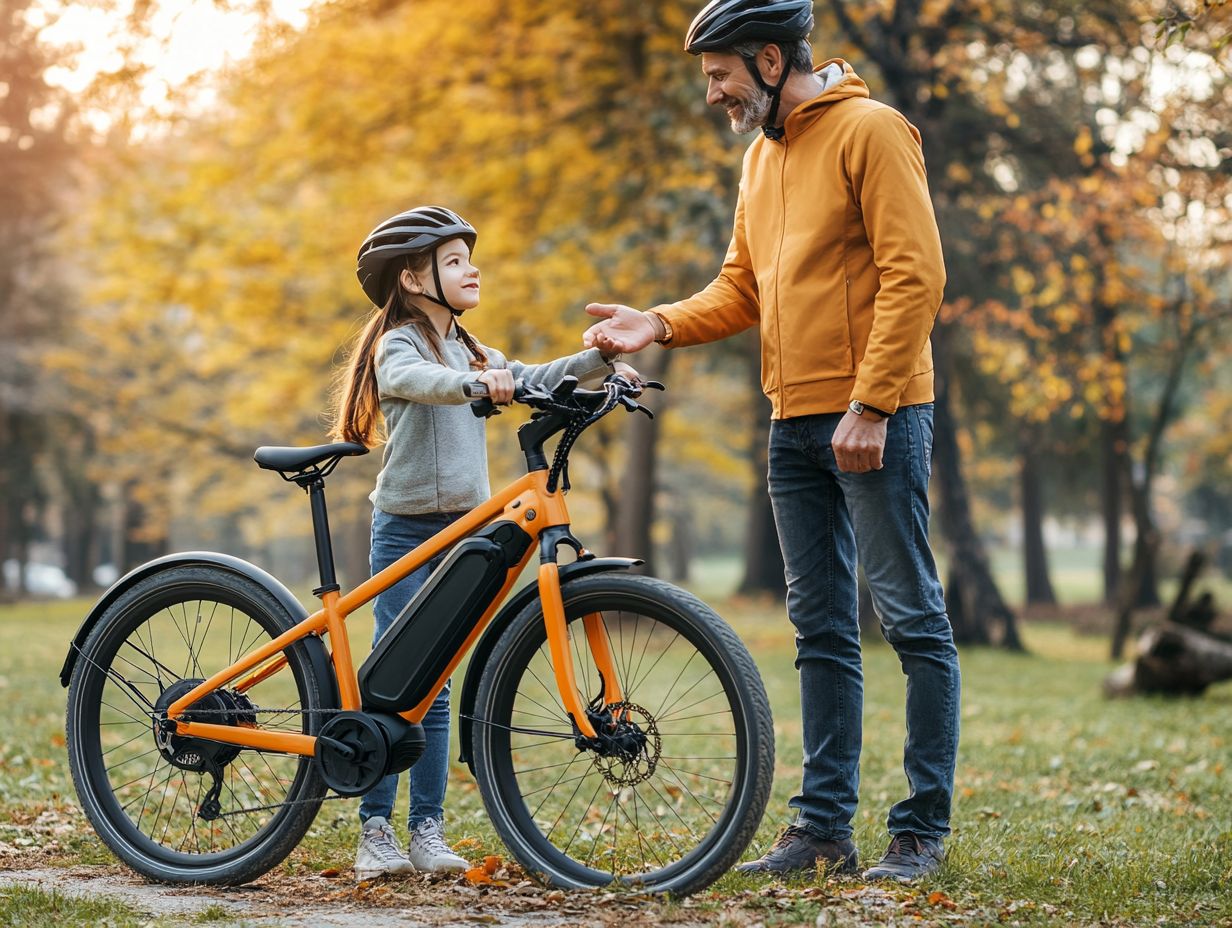
Yes, there are age restrictions for riding an electric bicycle. In most states, the minimum age to ride an e-bike is 16 years old. However, some states may have different age restrictions. It is important to check your local laws.
Do electric bicycles require a license or registration?
In most states, electric bicycles do not require a license or registration to operate. However, some states may have different regulations, so it is essential to check your local laws to ensure compliance.
What safety equipment is required when riding an electric bicycle?
When riding an electric bicycle, it is crucial to wear a properly fitted helmet. Wearing reflective clothing and lights is also recommended, especially when riding at night or in low visibility conditions.
Are there any speed limits for electric bicycles?
Yes, there are speed limits for electric bicycles. In most states, the maximum speed for an e-bike is 20 miles per hour. However, some states may have lower or higher speed limits. It is important to check your local laws.
Can I ride my electric bicycle on bike paths or trails?
In most cases, electric bicycles are allowed on bike paths and trails. However, some states may have specific regulations or restrictions. It is essential to check your local laws before riding your e-bike on these paths.
Don t wait get your child the best e-bike today!


